This article was medically reviewed by Shari Forschen, NP, MA. Shari Forschen is a Registered Nurse at Sanford Health in North Dakota. Shari has worked in healthcare since 1996 and her expertise lies in acute care bedside nursing on a medical oncology floor. She received her degree from Medcenter one College of Nursing in 2003 and her Family Nurse Practitioner Masters from the University of North Dakota in 2014. Shari is a member of the American Nurses Association.
There are 12 references cited in this article, which can be found at the bottom of the page.
This article has been viewed 20,187 times.
Diabetes is a group of metabolic diseases that affect how much sugar (glucose) is in the blood.[1] Diabetes has been recognized for thousands of years, but in the last 200 years type 2 diabetes, an acquired disorder, has grown to worldwide epidemic proportions. Because humans have a “sweet tooth,” and processed foods have lots of sugar to make them tastier, over consumption of processed foods has lead to this epidemic. The good news is that while dietary practices and habits can prompt type 2 diabetes, they can also prevent and control it; however, note that type 1 diabetes cannot be controlled through diet modifications.
Steps
Using Diet to Prevent or Control Type 2 Diabetes
-
1Follow an anti-inflammatory or low-glycemic index diet.[2] To prevent and treat type 2 diabetes (T2D), dietary approaches emphasize whole foods, complex carbohydrates and high-density nutrients including proteins and healthy fats. These guidelines are essentially part of both anti-inflammatory and low-glycemic index diets, which are gaining more and more acceptance with physicians.
- Chronic inflammation has been linked with diabetes and other diseases — including heart disease, Alzheimer's, depression, and arthritis.[3]
-
2Keep your food as close to its original or natural form as possible. This means that you should try to limit any processed or prepared foods and cook from scratch using fresh ingredients as much as possible.[4] When you cook your own food, you can better control the ingredients and avoid excess sugar and other ingredients that might affect your diabetes.
- If you are pressed for time, try using a crock pot or preparing the basics (like rice, beans and even meats and vegetables) ahead of time and freezing them.
Advertisement -
3Make at least half of your carbohydrates complex carbs, as opposed to simple carbs.[5] Complex carbohydrates are made up of individual sugar molecules that are strung together in long, complicated and often branched chains. Complex carbohydrates are found in whole, unprocessed foods such as whole grains, peas, lentils, beans, and vegetables.
- Carbohydrates are converted into sugar, or glucose, when you eat them, so it is important you are very aware of your intake of carbohydrates.[6]
- Simple carbohydrates are often found in processed foods and include added sugars like glucose, sucrose (table sugar) and fructose (most often added as high fructose corn syrup).
- Recently, the ingestion of high-fructose corn syrup (by consuming soft drinks and other beverages with HFCS added) has, like the over-ingestion of sugar, been associated with increased risk of T2D, cardiovascular disease and obesity. Obesity can lead to insulin resistance and diabetes.
- The reason that processed foods should be avoided is that they include both simple carbohydrates along with added sugars. Sugar by itself does not cause diabetes, but ingesting more sugar-filled beverages, for example, is linked to an increased risk of Type 2 diabetes.
-
4Read food labels closely. Reading labels can be useful to determine the amount of sugars in a food, but manufacturers are not required to list added sugars. You can avoid any added sugars by sticking to the unprocessed foods.
- A good rule of thumb is no “white” foods: no white bread, white pasta, white rice.
-
5Increase the fiber in your diet.[7] This can be done by increasing your fruit and vegetable intake, as well as by adding specific high-fiber foods to your meals. For example, you can include a tablespoon of ground flaxseeds at every meal. Either get a coffee grinder to grind your own flaxseeds or keep pre-frozen ground seeds in your freezer (to keep the healthy oils that you also get in flaxseeds from getting rancid).
-
6Limit red meats and increase the amount of fish and skinless poultry you eat. Look for wild-caught fish, such as salmon, cod, haddock and tuna. These fish are good sources of omega-3 fatty acids that are essential for your health and are anti-inflammatory.
- The skin of fish and poultry is avoided because it can be high in animal fat, as well as any added hormones and antibiotics. This promotes inflammation.
-
7Increase the amount of water you drink. According to the Institute of Medicine, women should consume about 2.7 liters (91 ounces, or 11 cups) of water each day, and men should consume about 3.7 liters (125 ounces daily, or 15 cups) of total water.[8] This may seem like a lot, but that's because this measurement takes into account the water we get from foods and other beverages.[9]
-
8Limit sugar intake. A diagnosis of T2D does not mean you can’t eat ANY sugars. It means that you control the amount of sugars you eat and how you ingest them. For example, the sugars in fruit are combined with fiber and this means that the absorption of sugars from the fruit are slowed down.
-
9Use herbs that help your condition. There are a large number of herbs that you can add to your diet to help control blood sugar levels. Add to taste whenever you want! These herbs may help you get over some of those sugar cravings as well. These herbs are all very safe with no side effects when taken in commonly used amounts as food:
- Cinnamon
- Fenugreek
- Okra (not quite an herb, but more of a side-dish)
- Ginger
- Garlic and onions
- Basil
Understanding Diabetes
-
1Understand the different forms of diabetes.[12] Type 1 diabetes is an autoimmune disorder, usually appearing when a person is quite young. Type 2 diabetes is an acquired disorder. There is also gestational diabetes and prediabetes.
- In Type 1 diabetes (T1D), specific cells in the pancreas, the beta cells, are destroyed. Because beta cells make insulin, in T1D, the body is no longer able to make insulin and no longer able to control blood sugar levels. People with T1D have to take insulin their whole lives.
- Type 2 diabetes used to be considered an adult condition that is unfortunately appearing more and more often in children. Type 2 diabetes (T2D) or diabetes mellitus is the most common form of diabetes — genetics, diet and environmental factors play an important role in the development of Type 2 diabetes. In T2D blood sugar levels can be controlled by diet, medication, supplemental insulin, or a combination of all these.
- A third form of diabetes is called gestational diabetes. It occurs in the second half of pregnancy and occurs in less than 10% of pregnant women.[13]
- Some physicians include a condition called prediabetes as an early form of diabetes. Individuals with prediabetes have higher than normal levels of blood glucose, but not high enough to be diagnosed as diabetics. Individuals with pre-diabetes (also known as insulin resistance) have a very high risk of developing T2D.
-
2Understand what insulin is and does. Insulin, a hormone produced by the pancreas, is the main chemical messenger that tells the cells that it is time to take up glucose. Secondly, insulin is involved in messaging the liver to take up glucose and transform it into the storage form of glucose known as glycogen. Third, insulin is involved in a wide range of other functions like protein and fat metabolism.[14]
-
3Understand insulin resistance.[15] All diabetics can also be thought of as having insulin resistance. The reason they have high blood glucose (blood sugar) is that the cells in their body do not take up glucose and the reason for this is that the cells in their body do not respond normally to insulin.
- Every cell in our body uses glucose (sugar) for producing the energy needed for the cells to do their jobs. The glucose is derived from the foods we eat, primarily from carbohydrates. These are molecules composed of chains of various different sugars, including glucose. Complex carbohydrates have many chains and are often branched while simple carbohydrates have shorter, unbranched chains. Insulin, a hormone produced by the pancreas, is the main chemical messenger that “tells” the cells that it is time to take up glucose.
- If the cells become insulin resistant, they “ignore” or can’t respond to the signal from insulin. This can increase the levels of glucose in the blood. When this happens, the pancreas responds by producing even more insulin, in an attempt to “force” the glucose into the cells. The problem is that since the insulin has no effect on the insulin-resistant cells, the blood glucose levels can keep rising. The body’s response is to convert the high levels of glucose in the blood into fat, and that can set up a scenario of chronic inflammation and other disorders like full blown T2D, obesity, metabolic syndrome and heart disease.
-
4Look for the symptoms of type 2 diabetes. These can come on at any point in your life. The most common symptoms of T2D are:[16]
- Increased thirst along with more frequent urination
- Increased appetite
- Weight gain or unexpected weight loss
- Blurry or changed vision
- Fatigue
- Increased number of infections from cuts or bladder/vaginal/gum infections
-
5Get diagnosed by a physician. Type 2 diabetes is diagnosed by a number of specific blood tests that measure how well your body handles sugars. Tell your doctor your symptoms and, if she sees a need, the doctor will test your blood.
- These tests include taking blood samples to test for blood sugar levels at various times, such as after fasting, after meals, or after ingesting a pre-set amount of glucose.
- If you have been diagnosed with diabetes, you should let your doctor know how you have changed your diet to improve blood sugar control.
- Get regular checkups, including blood tests, as advised by your physician.
- If you are trying to prevent diabetes, regular checkups are also advised.
-
6Decide if additional medical treatment is right for you. Most cases of diabetes can be controlled with a combination of medications, diet, and exercise. While you are in charge of the diet and exercise changes, sometimes you need additional help in the form of medication. Medications include hypoglycemics, which are medicines that lower blood sugars. These medications are generally safe, but do have some side effects. Talk to your physician about any medications you are on and ask especially about potential side effects. Common hypoglycemic medications include drugs in various classes:
- Sulfonylureas are the oldest medications used in T2D and stimulate insulin secretion. Examples include Glibenclamide (Micronase®), Glimepiride (Amaryl®) and Glipizide (Glucotrol®).
- Alpha-glucosidase inhibitors delay glucose absorption after a meal. An example is Acarbose (Precose®).
- Glinides stimulate the secretion of insulin and include Repaglinide (NovoNorm®, Prandin®, GlucoNorm®).
- Biguanides such as metformin makes the cells less insulin resistant and include metformin formulations such as Glucophage®, Glucophage XR®, Riomet®, Fortamet®, Glumetza®, Obimet®, Dianben®, Diabex® and Diaformin®.
- Dipeptidyl Peptidase-IV Inhibitors prevent the breakdown of certain proteins that improve glucose tolerance. An example is Sitagliptin (Januvia®) and Linagliptin (Tradjenta®).
Expert Q&A
-
QuestionWhat should I eat if I'm diabetic?
 Andrea Rudominer, MD, MPHDr. Andrea Rudominer is a board certified Pediatrician and Integrative Medicine Doctor based in the San Francisco Bay Area. Dr. Rudominer has over 15 years of medical care experience and specializes in preventive health care, obesity, adolescent care, ADHD, and culturally competent care. Dr. Rudominer received her MD from the University of California, Davis, and completed a residency at the Lucile Packard Children's Hospital at Stanford University. Dr. Rudominer also has an MPH in Maternal Child Health from the University of California, Berkeley. She is a Member of the American Board of Pediatrics, a Fellow of the American Academy of Pediatrics, a Member and Delegate of the California Medical Association, and a Member of the Santa Clara County Medical Association.
Andrea Rudominer, MD, MPHDr. Andrea Rudominer is a board certified Pediatrician and Integrative Medicine Doctor based in the San Francisco Bay Area. Dr. Rudominer has over 15 years of medical care experience and specializes in preventive health care, obesity, adolescent care, ADHD, and culturally competent care. Dr. Rudominer received her MD from the University of California, Davis, and completed a residency at the Lucile Packard Children's Hospital at Stanford University. Dr. Rudominer also has an MPH in Maternal Child Health from the University of California, Berkeley. She is a Member of the American Board of Pediatrics, a Fellow of the American Academy of Pediatrics, a Member and Delegate of the California Medical Association, and a Member of the Santa Clara County Medical Association.
Board Certified Pediatrician & Integrative Medicine Doctor Achieving and maintaining a healthy weight is a major step in preventing and perhaps reversing diabetes. Avoid eating a ton of processed sugars, refined flours, and saturated fats. Something like the Mediterranean diet is going to be much more healthy for you. You could also stick with a low-glycemic diet to cut back on sugars. Regardless, you should talk to your doctor before making any major changes to your diet.
Achieving and maintaining a healthy weight is a major step in preventing and perhaps reversing diabetes. Avoid eating a ton of processed sugars, refined flours, and saturated fats. Something like the Mediterranean diet is going to be much more healthy for you. You could also stick with a low-glycemic diet to cut back on sugars. Regardless, you should talk to your doctor before making any major changes to your diet.
Warnings
- If diabetes is not controlled, the risk of complications (eye, kidney, heart, circulatory, and nerve complications) and death is high.⧼thumbs_response⧽
References
- ↑ http://www.mayoclinic.org/diseases-conditions/diabetes/basics/definition/con-20033091
- ↑ http://www.ncbi.nlm.nih.gov/pubmed/20234036
- ↑ http://www.health.harvard.edu/staying-healthy/foods-that-fight-inflammation
- ↑ http://www.health.harvard.edu/staying-healthy/foods-that-fight-inflammation
- ↑ http://www.diabetes.org/food-and-fitness/weight-loss/food-choices/the-best-food-choices/?referrer=https://www.google.com/
- ↑ http://www.cpmc.org/learning/documents/diabetes-diet-ws.html
- ↑ http://www.cpmc.org/learning/documents/diabetes-diet-ws.html
- ↑ http://www.nationalacademies.org/hmd/Reports/2004/Dietary-Reference-Intakes-Water-Potassium-Sodium-Chloride-and-Sulfate.aspx#sthash.4JmHTXG5.dpuf
- ↑ http://www.nationalacademies.org/hmd/Reports/2004/Dietary-Reference-Intakes-Water-Potassium-Sodium-Chloride-and-Sulfate.aspx
- ↑ http://www.hsph.harvard.edu/nutritionsource/healthy-drinks-full-story/
- ↑ http://www.ncbi.nlm.nih.gov/pubmed/16443894
- ↑ http://www.merckmanuals.com/professional/endocrine-and-metabolic-disorders/diabetes-mellitus-and-disorders-of-carbohydrate-metabolism/diabetes-mellitus-dm
- ↑ http://www.merckmanuals.com/professional/gynecology-and-obstetrics/pregnancy-complicated-by-disease/diabetes-mellitus-in-pregnancy-gestational-diabetes
- ↑ https://www.niddk.nih.gov/health-information/diabetes/overview/what-is-diabetes/prediabetes-insulin-resistance#insulin
- ↑ http://www.merckmanuals.com/professional/endocrine-and-metabolic-disorders/diabetes-mellitus-and-disorders-of-carbohydrate-metabolism/diabetes-mellitus-dm
- ↑ http://www.merckmanuals.com/professional/endocrine-and-metabolic-disorders/diabetes-mellitus-and-disorders-of-carbohydrate-metabolism/diabetes-mellitus-dm
About This Article
To control diabetes with a healthy diet, try to avoid processed foods, like white bread or white pasta, as they typically contain large amounts of added sugar. You should also eat home-cooked fresh food to avoid excessive amounts of sugar and salt. Additionally, ensure at least half of all carbohydrates you eat are complex carbs, like lentils or beans, which help reduce your sugar intake. Make sure to reduce your consumption of flammatory foods as well, such as red meat and trans fats. For tips on how to use herbs to help your condition, keep reading!
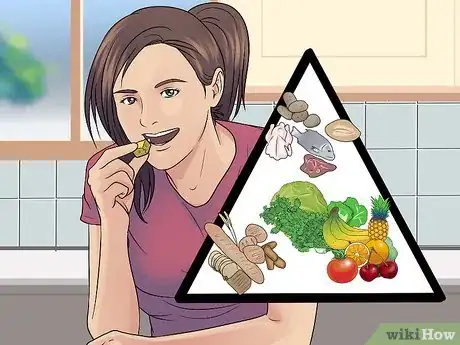
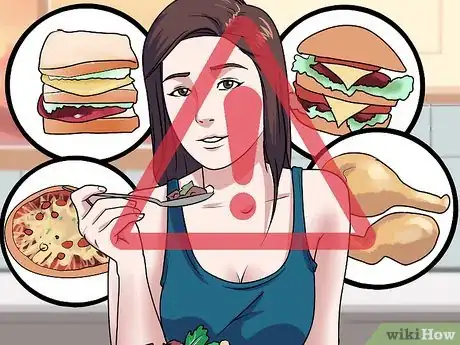


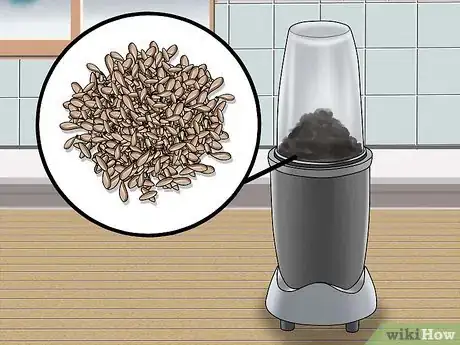
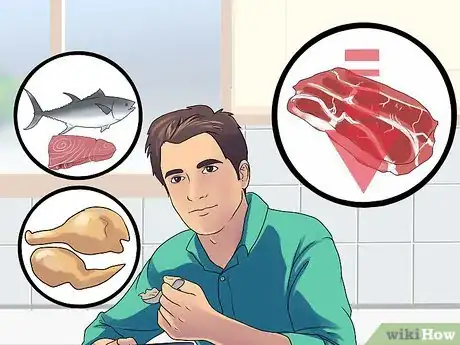


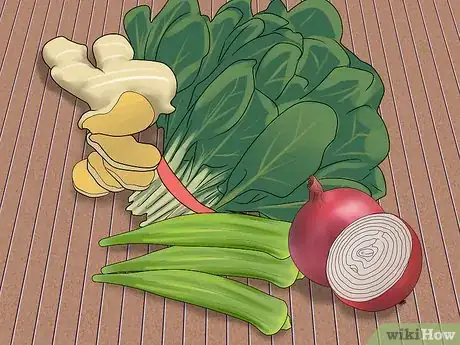
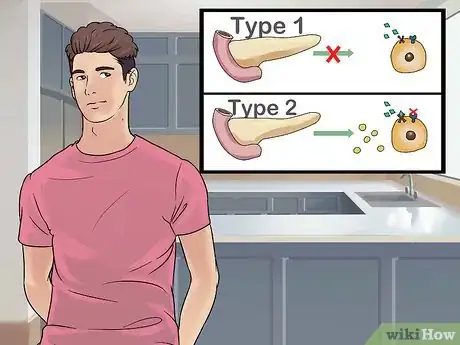
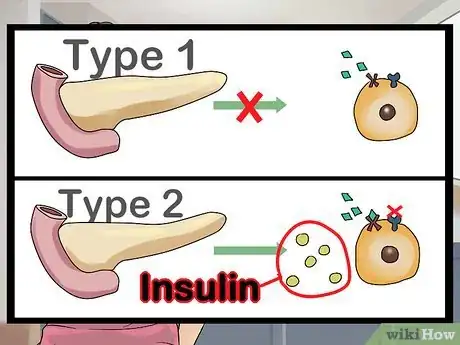

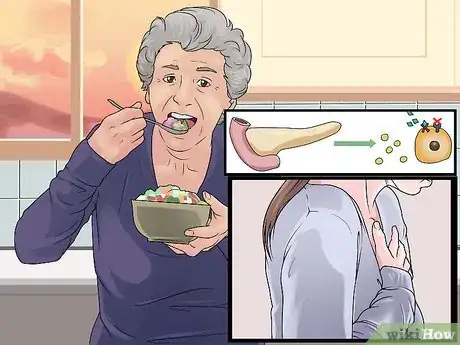






















































Medical Disclaimer
The content of this article is not intended to be a substitute for professional medical advice, examination, diagnosis, or treatment. You should always contact your doctor or other qualified healthcare professional before starting, changing, or stopping any kind of health treatment.
Read More...